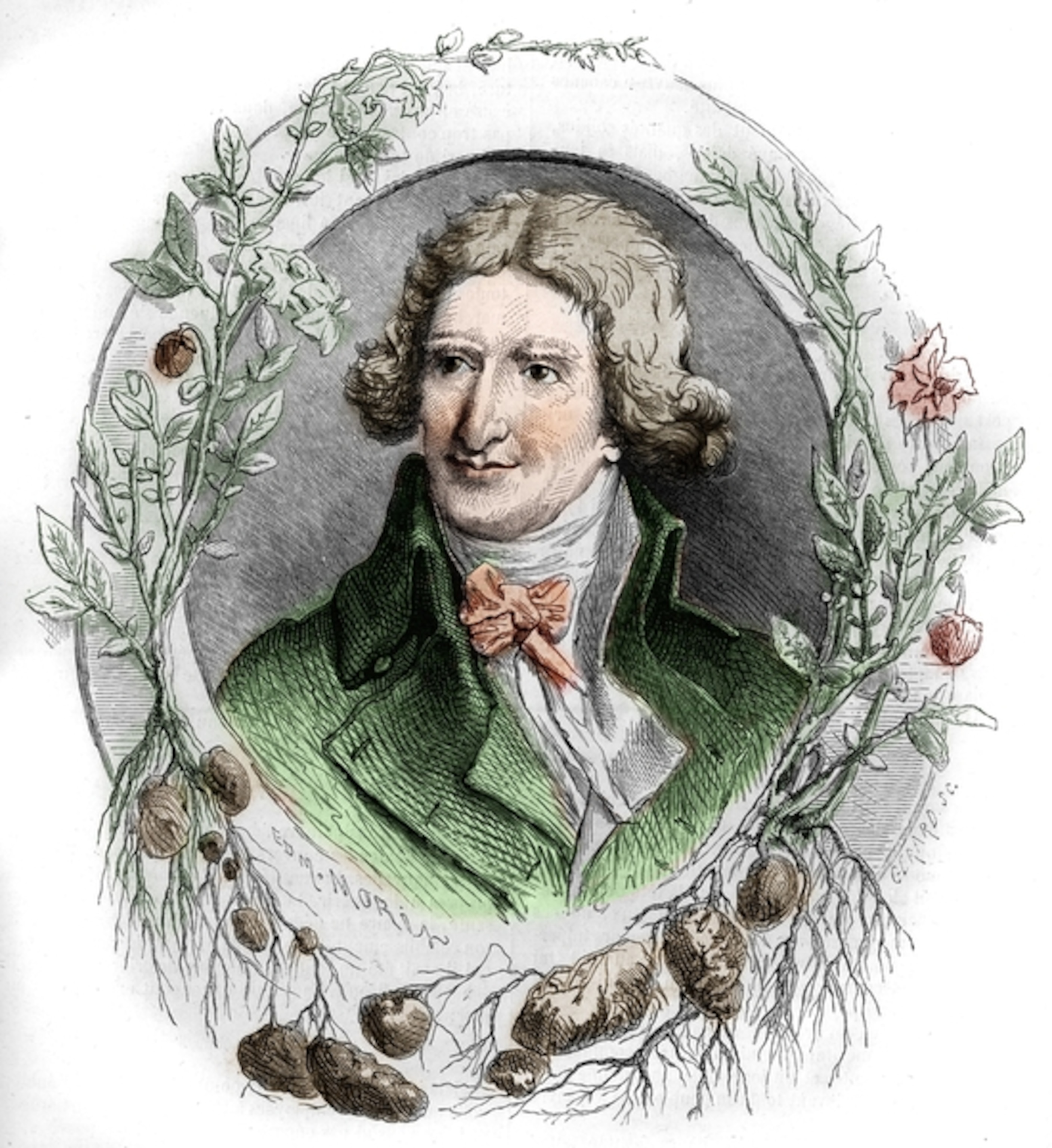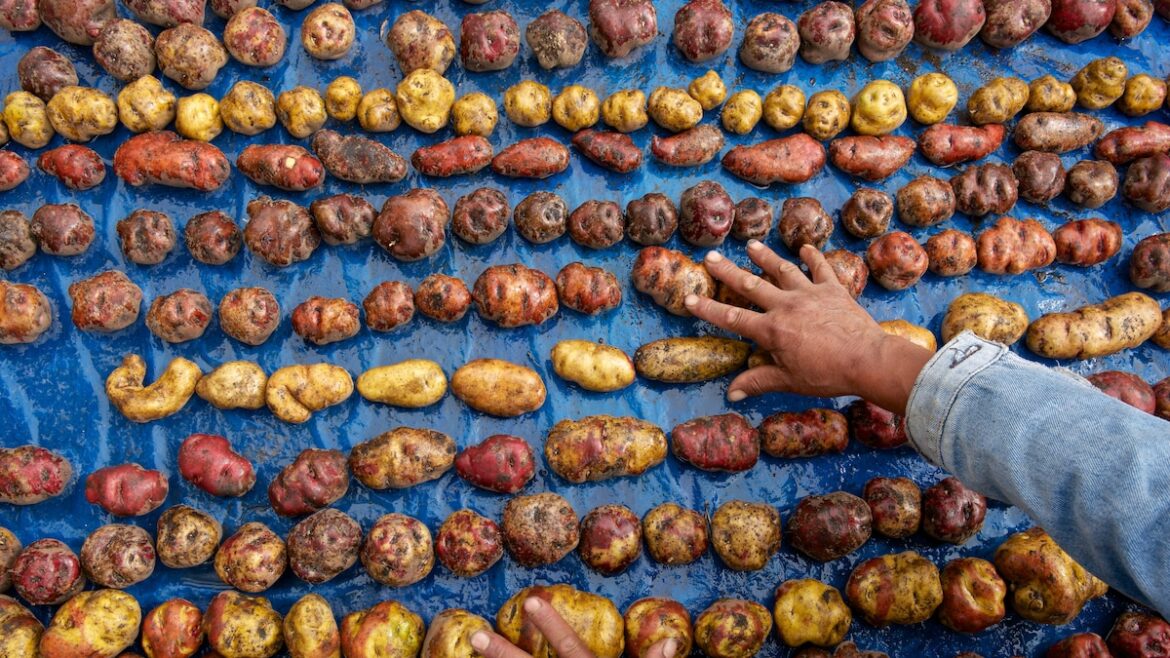How the potato was first cultivated
Before it became comfort food, the potato was considered sacrosanct. High in the Andes, some 8,000 years ago, the Incas and their ancestors cultivated the crop not just as food, but as fortune. Nutrient-dense, cold-resistant, and capable of growing in thin, rocky soil, the potato thrived where little else could and sustained sprawling pre-Columbian civilizations for centuries.
The Spanish conquistadors introduced the potato to Europe in the 1500s, smuggling it among the spoils of colonization alongside maize, cacao, and tobacco. But while the stolen gold and chocolate dazzled, the potato did not. It was fast-growing but unfamiliar, ugly, and covered in dirt like something best left unearthed. Though it had divine roots in South America, the strange tuber had to dig its way to respectability in the West.
 Potato propaganda
Potato propaganda
By the 18th century, most French recipes were rooted in religion, so while orchard fruits and game birds were celebrated, anything dug from the “devil’s dirt”—like onions, carrots, and especially potatoes—was deemed fit only for peasants and swine. People believed the potato was akinto the deadly nightshade and linked to leprosy due to its spotted skin; it was deemed un-Christian, and its cultivation for human use was banned.
France was facing a famine by the late 1700s and starving—literally and figuratively—for a solution. Due to dreadful weather and poor farming techniques, wheat fields lay fallow, bread was scarce, and bellies were empty.

Portrait of Antoine Augustin Parmentier (1737-1813), French military pharmacist and agronomist.
Photograph by Stefano Bianchetti/Bridgeman Images
But Antoine-Augustin Parmentier, a French pharmacist who survived on potatoes as a prisoner in Prussia, rose to become a staunch spokesperson for the spud. To sway the scientific community, he penned pro-potato pamphlets, won scientific accolades for using potatoes to treat dysentery and replace flour, and hosted glamorous, starch-studded soirées for Parisians and international elites. He also gave the tuber the royal treatment by gifting potato blossoms for Marie Antoinette’s wigs and the king’s lapels to debut exotic potato couture at court.


Dining and Cooking